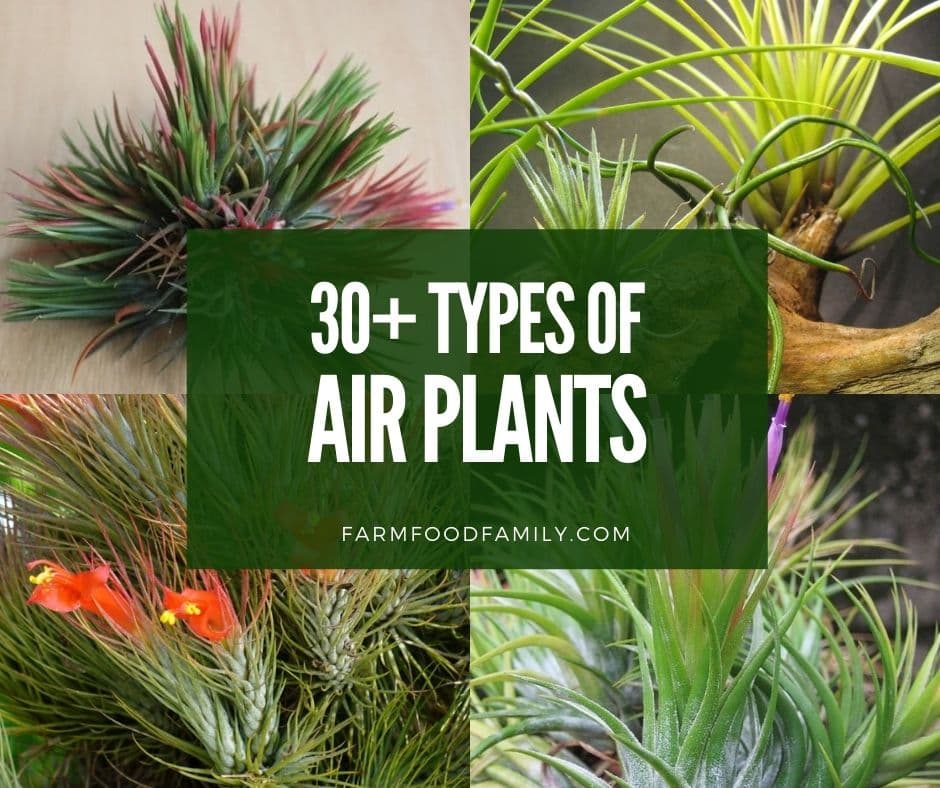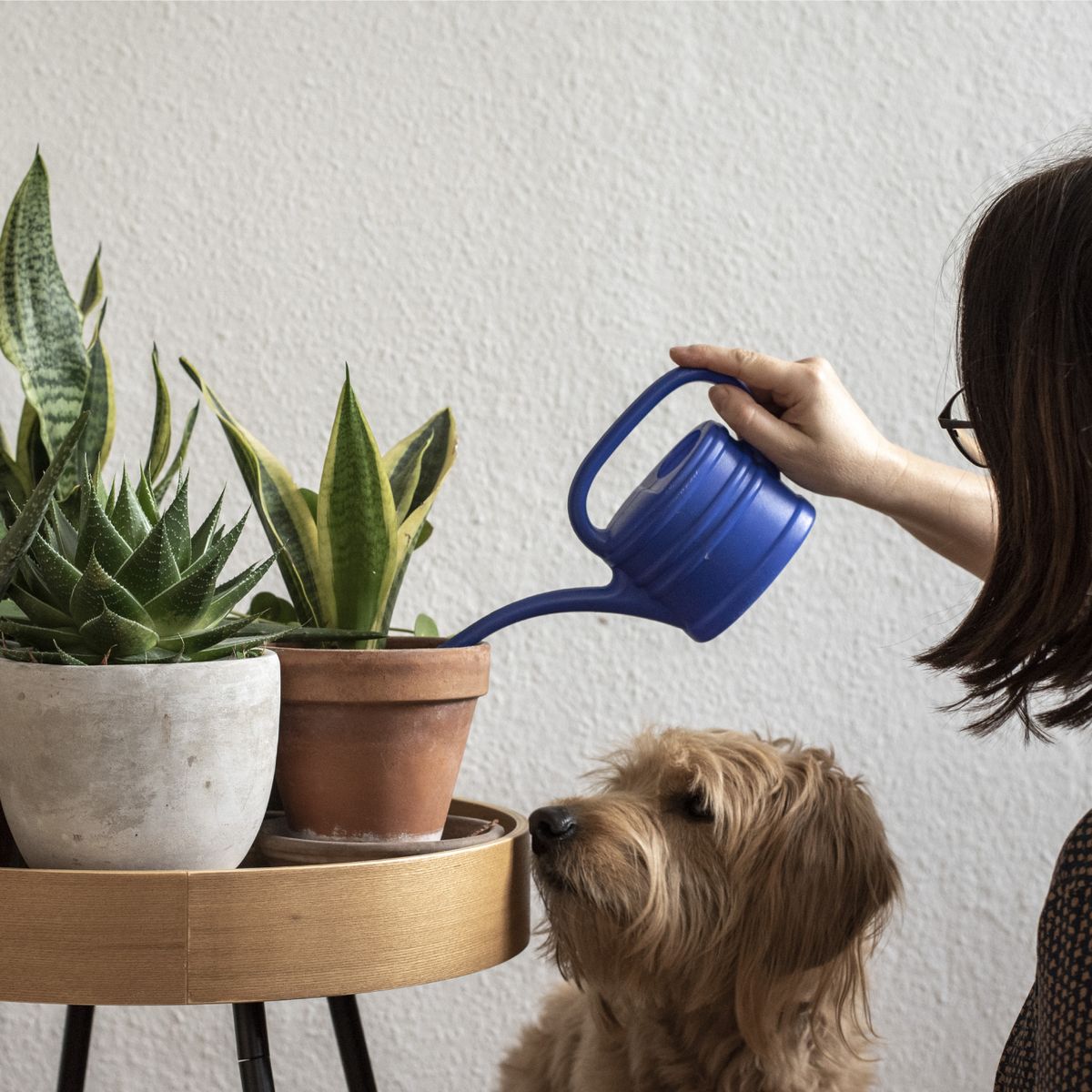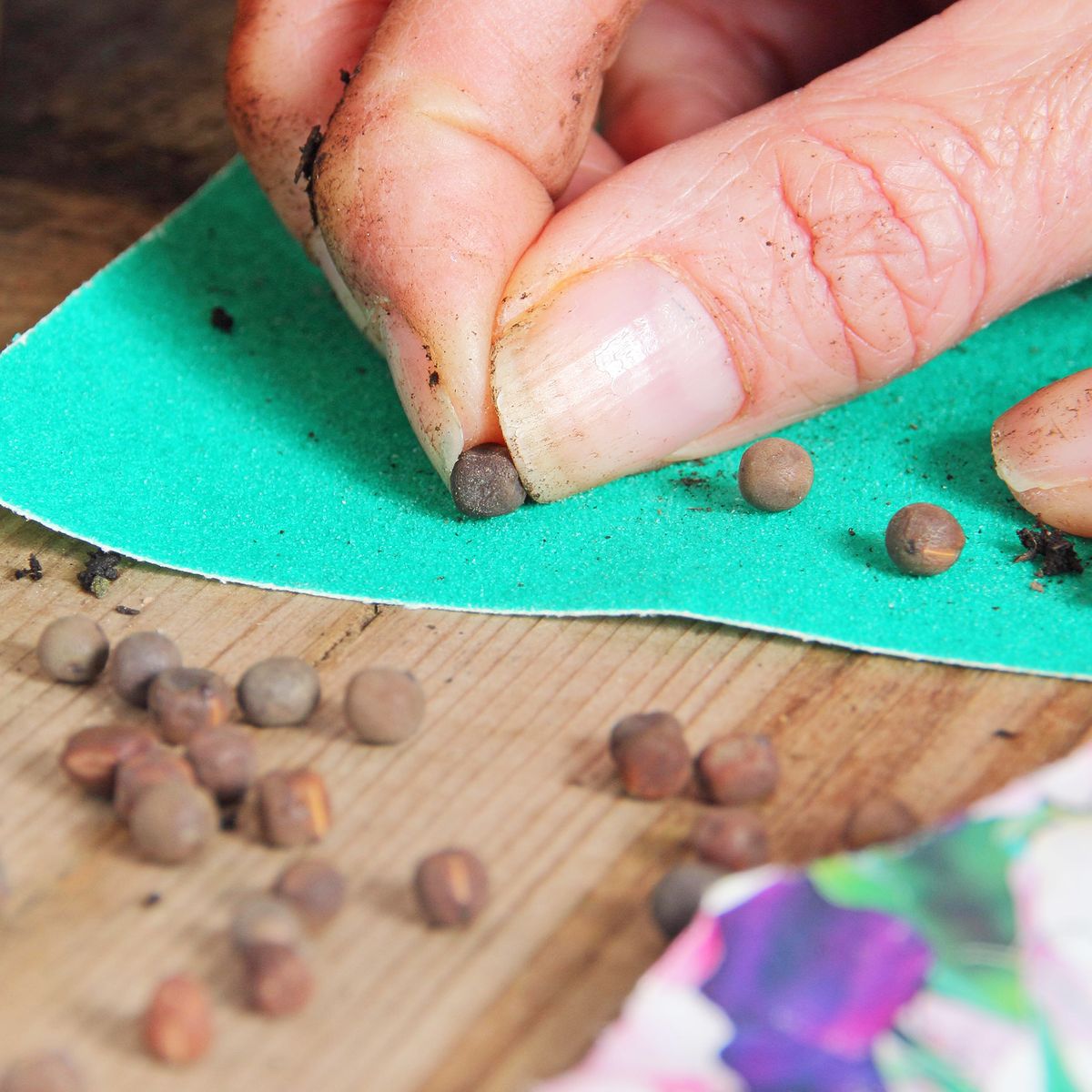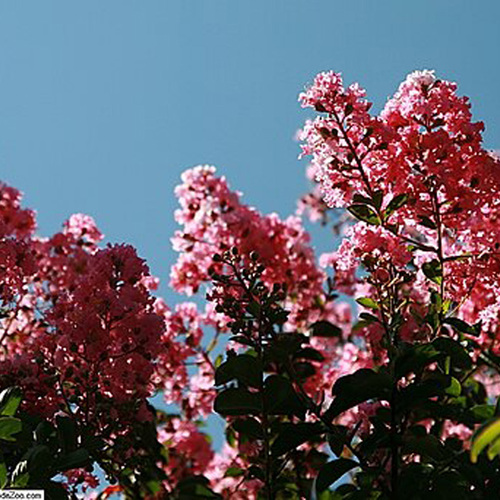
Air plants are popular flowering houseplants and are considered as the cousin of the famous Bromeliad.
There are almost 500 species of air plants and the most fascinating thing about them is that they grow even without roots. Aside from this, they are also very low maintenance, making them the perfect flowering houseplant for any home.
Fortunately, there are different types of air plants to choose from. In this post, we rundown some of the most common types to choose for your home. Notable FAQs in terms of care and maintenance are also covered.
Related: 40+ Different Types Of Jade Plants (Crassula Ovata) With Pictures

What are air plants?
Air plants, also called as tillandsias, are popular as a decorative house plant endemic in the tropics and around the subtropical regions of the United States. It is unique in a sense that it doesn’t need soil and is not water dependent.
In the wild, they are considered as epiphytes. They attach themselves to a host, but they do not have a parasitic relationship with them.
As the name implies, they just freely swing in their hosts, feeding from the moisture of dirt fibers to grow. As houseplants, this plant grows with the help of the occasional watering and enough sunlight. Hence, considered as one of the most perfect indoor plants.
Air plant symbolism
Air plants, even in the aspect of symbolism, are very uncomplicated. Air plant symbolizes freedom and creativity. Freedom as it is considered lightweight in nature and can be travelled from one place to another.
Creativity because, when having a small room or space, your resourcefulness in putting the plant inside will be challenged bringing out the creativity in you.
How do I identify an air plant?
Identified mainly by their tiny size and the absence of visible roots. They are usually bright to pale green in color, have thin and long drooping leaves. They attach themselves like orchids in big trees and hang indoors, making them very soothing to the eyes.
Air plant benefits
- Reduce stress and boost energy. After a tiresome day at work or at home, seeing a bit of green eases your stress. Other than that, their light and free look really gives a soothing and calming effect to the space.
- Purifies the air. One special characteristic of an air plant is that it absorbs mercury which is one of the most common toxins found around the home. Having this eliminated around the home is a major plus for this plant.
- Decorative. With their form and overall look, it is considered as one of the most beautiful and excellent decorative plants out there as they can be hung freely on walls and other objects in a room or space.
Types of air plants
1. Argentea (Tillandsia fuchsii var. gracilis)
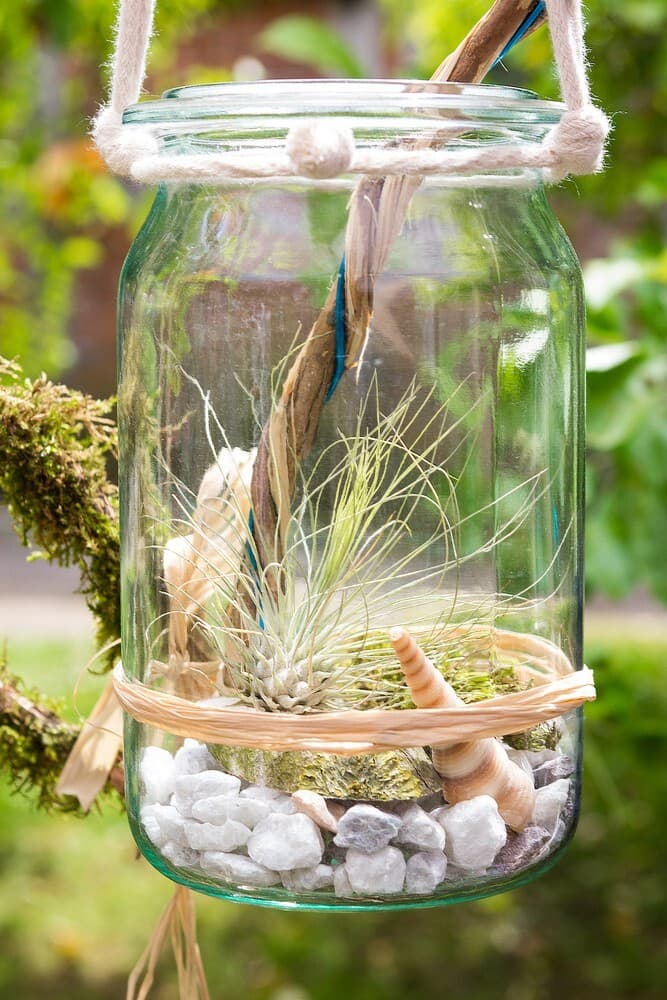
This type of air plant has very long, skinny gray-green leaves that require just a bit of sunlight. It grows from 5-6-inches tall and a width of 1-2-inches.
2. Bailey’s ball moss (Tillandsia Baileya)
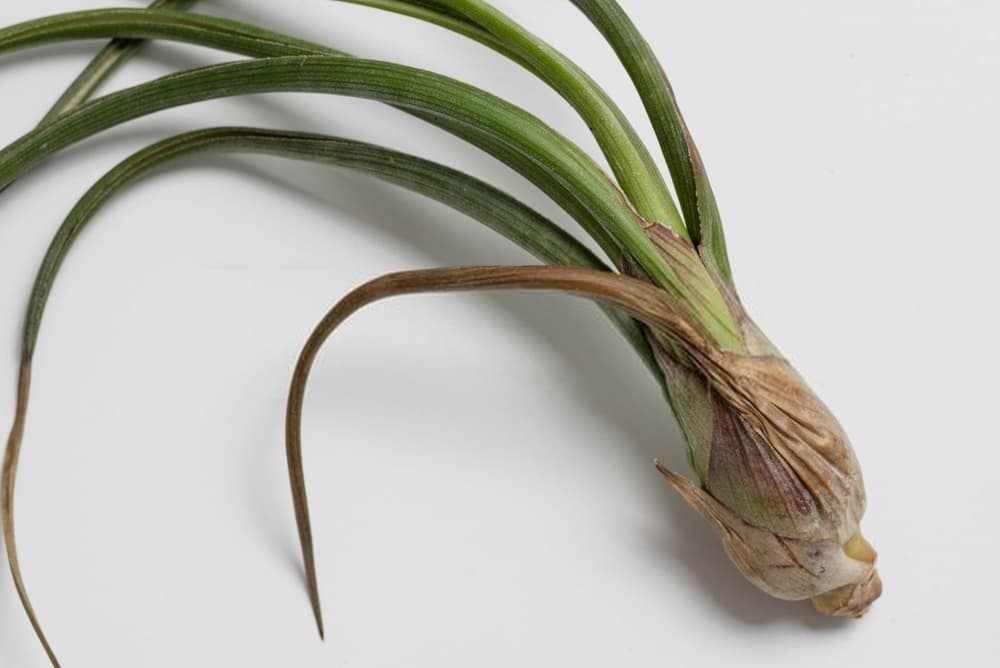
This type of plant is also called the Reflexed Air plant. It is notable for its long, flexible leaves that are thin and marked with horizontal lines.
This type produces pinkish flowers that are 3-cm long. This type of air plant requires a lot of sunlight, thus, when having one, make it a point that you put them in a place where it receives its needed sunlight.
3. Ball Moss (Tillandsia recurvata)

This type of air plant is also known as small ball moss or ball moss. It has a nest shape, gray-green leaves with emerging lavender flowers.
Its special feature is that its seeds germinate even on a seed pod which makes it easy to propagate. Another special feature is that the plant, when turned red, indicates that its flowers are already blooming.
4. Bulbous air plant (Tillandsia bulbosa)
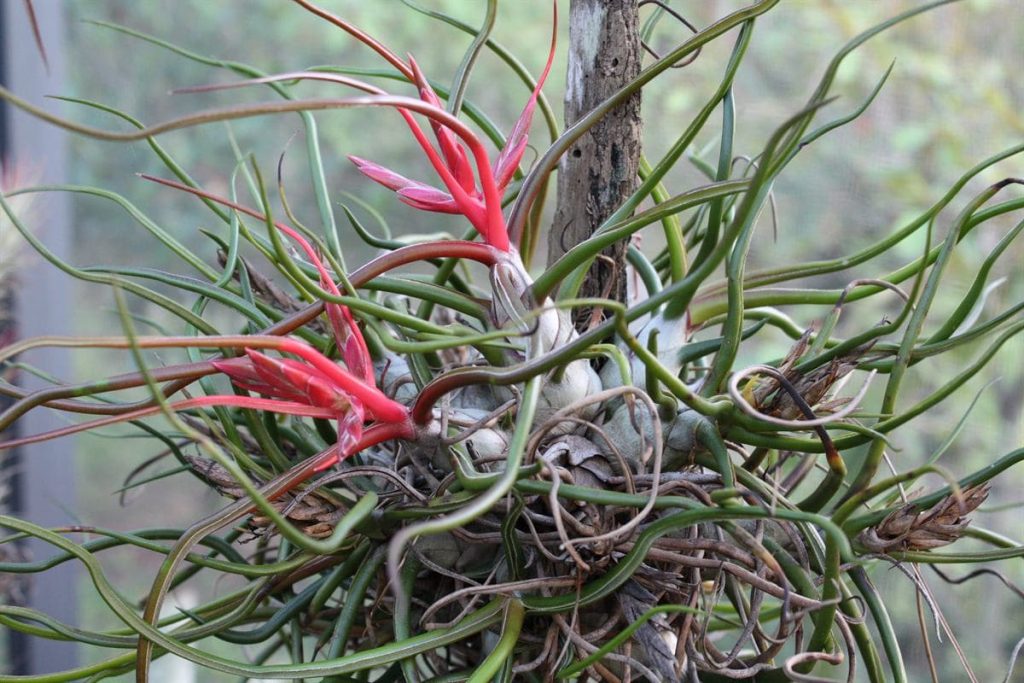
This type of plant has narrow leaves which look like tentacles and is known for its color that changes to purple or red when the flowers are to bloom.
This plant has a symbiotic relationship with ants, thus, allowing them to live inside them. Requires a bit of sunlight and grows from 4-7-inches in height.
5. Cacticola (Tillandsia cacticola)

This type of plant has a silvery green rosette of leaves and produces lavender flowers. This type also does not produce many offsets making it hard to find during cultivation. This also makes it a rare type of air plant.
6. Circinata (Tillandsia circinata)
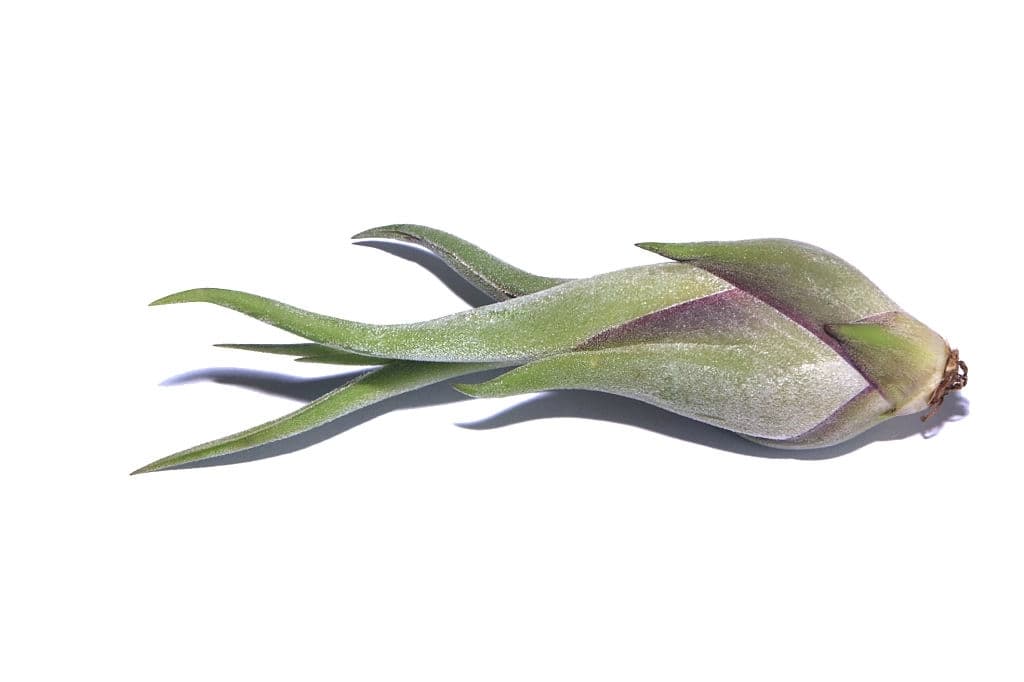
This type of plant has thick silver green leaves and produces flowers of yellow or purple in color which can grow up to 8-inches.
7. ‘Cotton Candy’ (Tillandsia stricta x T. recurvifolia ‘Cotton Candy’)
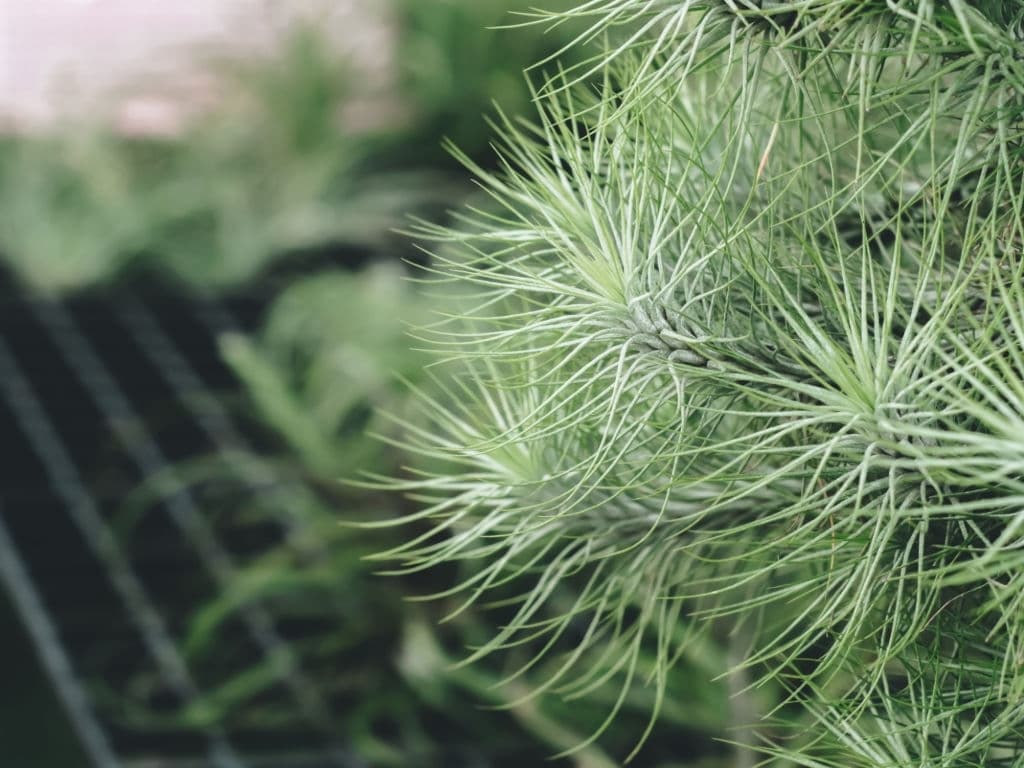
This type has long, thin, silvery leaves similar to a loose spider dahlia. This one is bred for its high ornamental value, thanks to its pink flower spikes which require bright light to bloom the best.
8. Didisticha (Tillandsia didisticha)
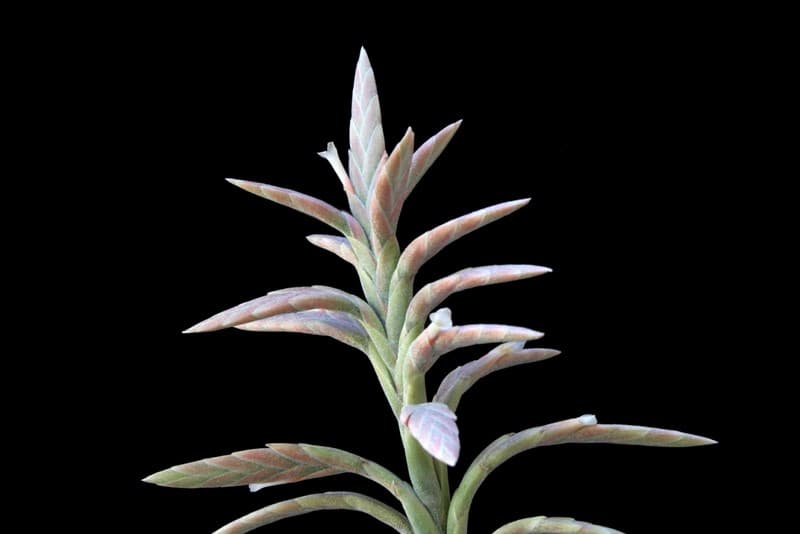
This type of air plant differs from the others as it is large, which is not typical for an air plant. It has skinny, pointed, gray-green leaves which form from the base of the plant. The flower it produces has pinkish bracts and has white flowers.
9. Druid sky plant (Tillandsia ionantha ‘Druid’)

This type of air plant is small in size and has a pink tone leaf that produces white flowers. It grows for about 2-4-inches and requires bright but not direct sunlight.
10. Dyeriana (Tillandsia dyeriana)
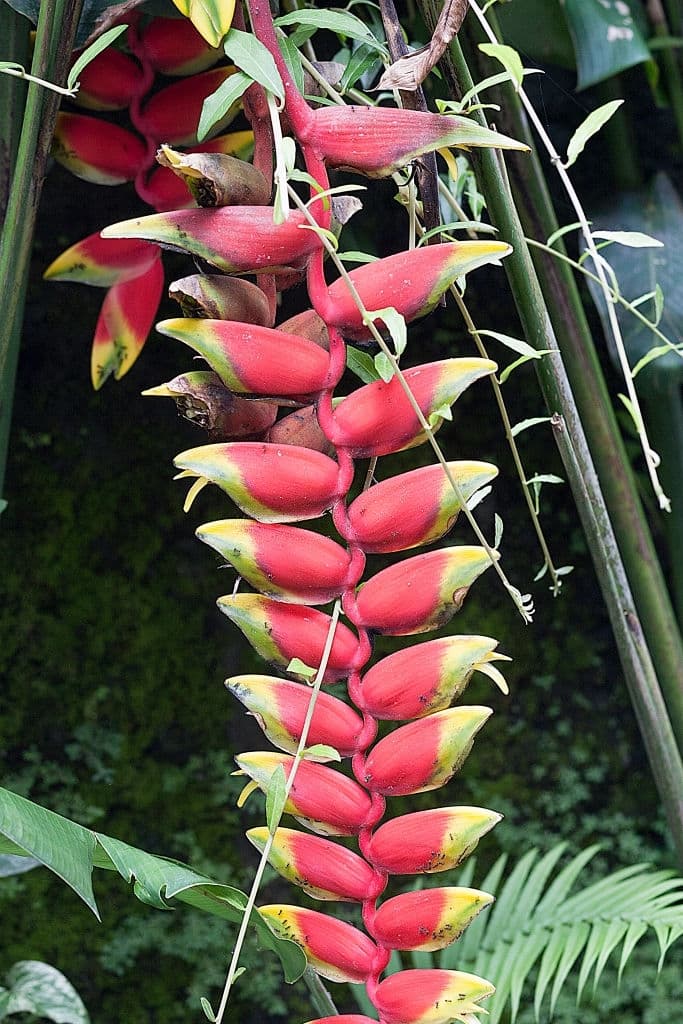
This type or air plant is tropical in nature as its leaves are in bright orange color that produces white flowers.
This type can be grown in pots but make sure that it receives moisture to grow. When placed in pots, it can grow largely up to 18-inches high.
11. Flabellata (Tillandsia flabellata)
This type of air plant is often described as a candelabra as the leaves grow tall and spread like the shape of a candelabra. It produces red flowers and is growing about 12-inches high.
12. Fuego sky plant (Tillandsia ionantha ‘Fuego’)
This type of air plant is small but is an eye catcher because the leaves retain its seemingly blushing pink color which lasts long after its flower blooms.
This plant grows only 1-inch high. This is best placed in an office tabletop or in a sala set table.
13. Funkiana (Tillandsia funkiana)
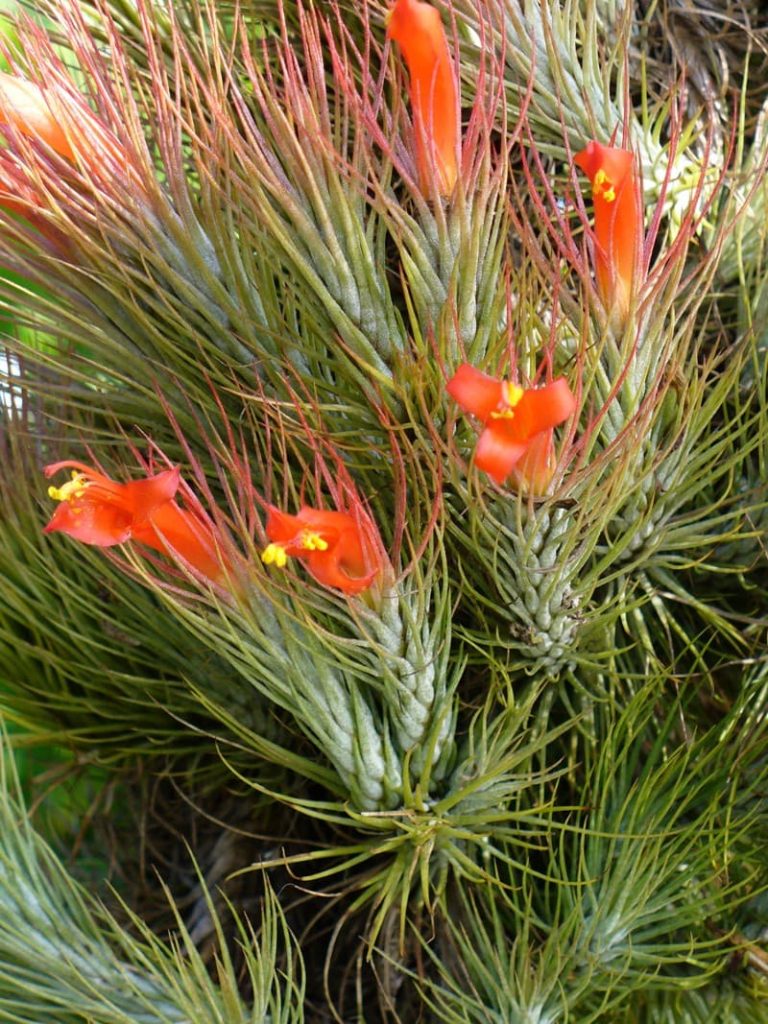
This type of an air plant are the elongated ones which bend or curl forming different shapes and sometimes spiraling.
Grows for about 2-inches high and considered to be a desktop plant. Its leaves also turn red when the flowers are blooming, have red inflorescence and produce yellow flowers.
14. Fuzzy wuzzy (Tillandsia pruinosa)
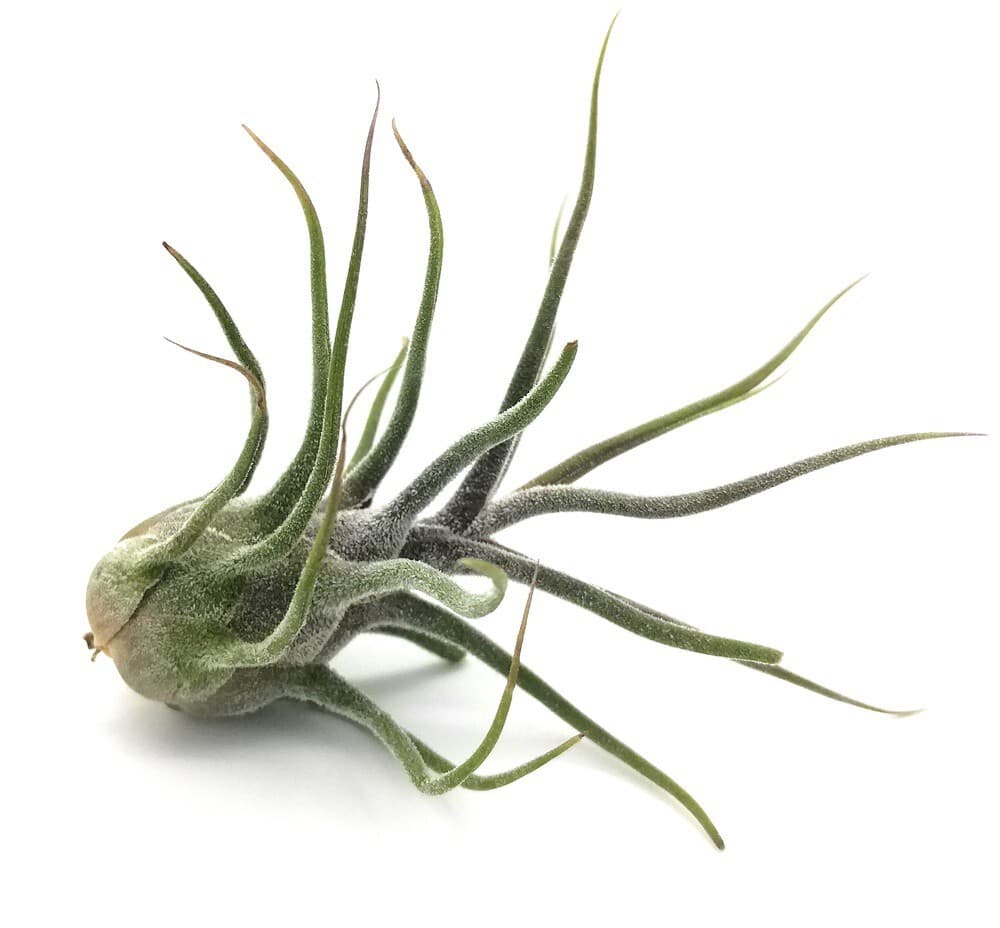
This type of air plant has velvety twisting leaves. It produces purple flowers with bulbs in vibrant pink. It requires good circulation rather than sunlight but still needs partial sunlight.
In some areas, like Floria, Fuzzywuzzy is considered endangered in the wild since it provides damage to insects and destroys habitat.
15. Gardneri (Tillandsia gardneri)
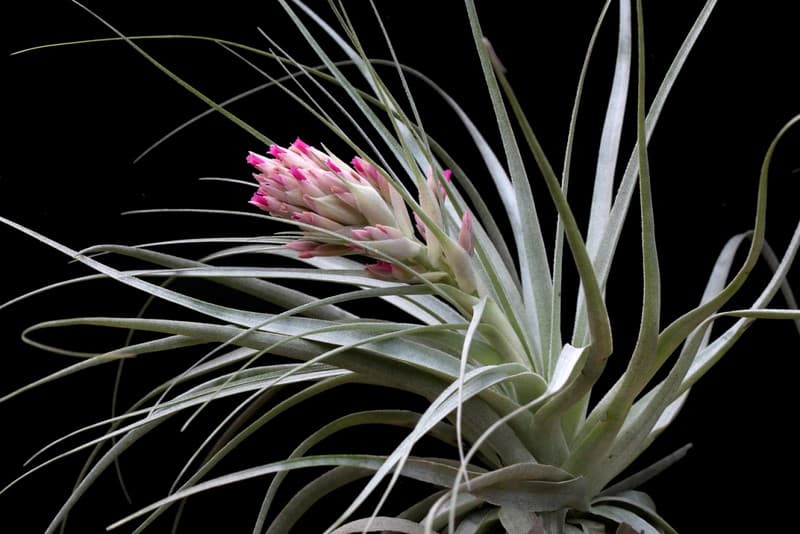
This type of air plant is so much likened to a small yucca plant. It has pale grayish leaves and is considered to be large as it grows up to 12-inches tall.
If you want a plant that does not require bright lights, this is best of your choice.
16. Giant Air Plant (Tillandsia fasciculata)
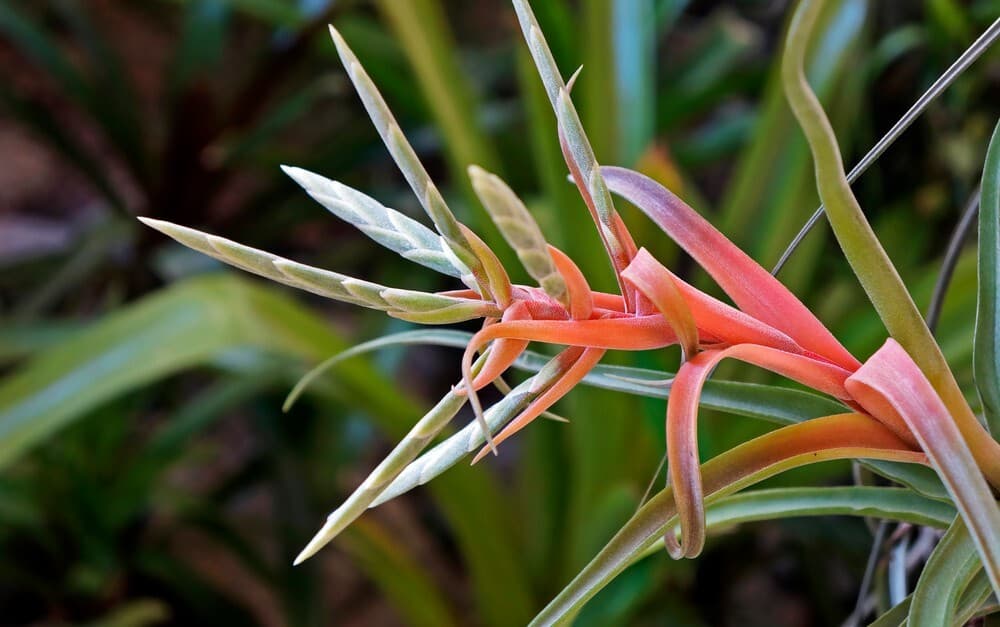
This type of plant has many names which include giant air plant, quill-leaf air plant, cardinal air plant and wild pineapple. This is the type which is commonly owned by many as it also has hundreds of variations and hybrids.
17. Houston cotton candy (T. stricta x T. recurvifolia)

This type of air plant is considered to have a very fast-growing silver rosette. It has soft leaves that are silver in color with shades of purple when in bloom.
When looking for a beautiful air plant, this might be your choice as it produces beautiful cotton candy-colored blooms with delicate white flowers.
18. King of Tillandsias (Tillandsia xerographica)
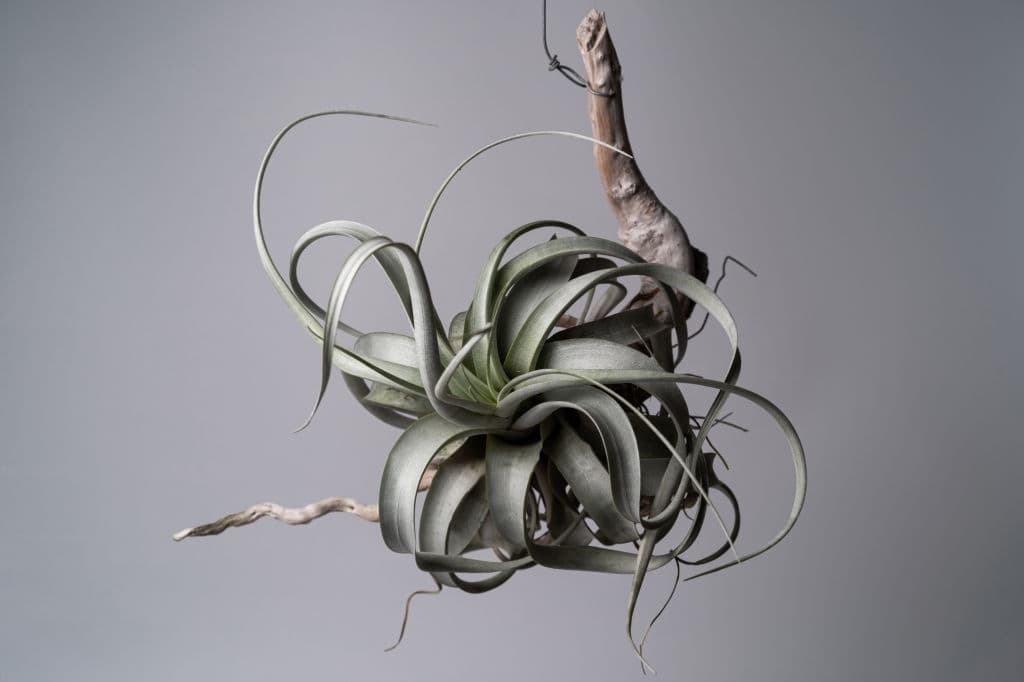
This type of air plant is considered to be the king of all Tillandsias. It has unique wide, flat gray-green leaves. New leaves sprout on the center of the rosettes. Stored water from the plants makes the leaves grow beautifully.
19. Kolbii (Tillandsia scaposa ‘Kolbii’)
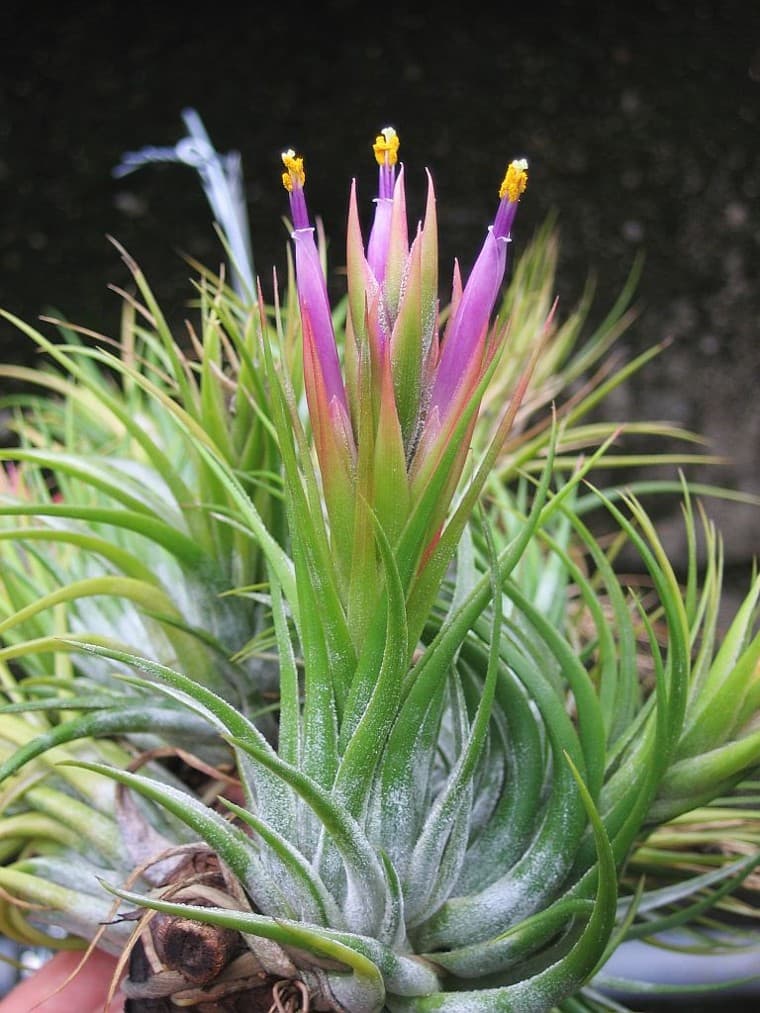
This type of air plant grows in differently-odd directions. Its special feature is that when it is dry, its color turns to grey which makes It less attractive. So, when growing such a plant, make sure that it receives enough moisture to revitalize the plant.
20. Loliacea (Tillandsia loliacea)
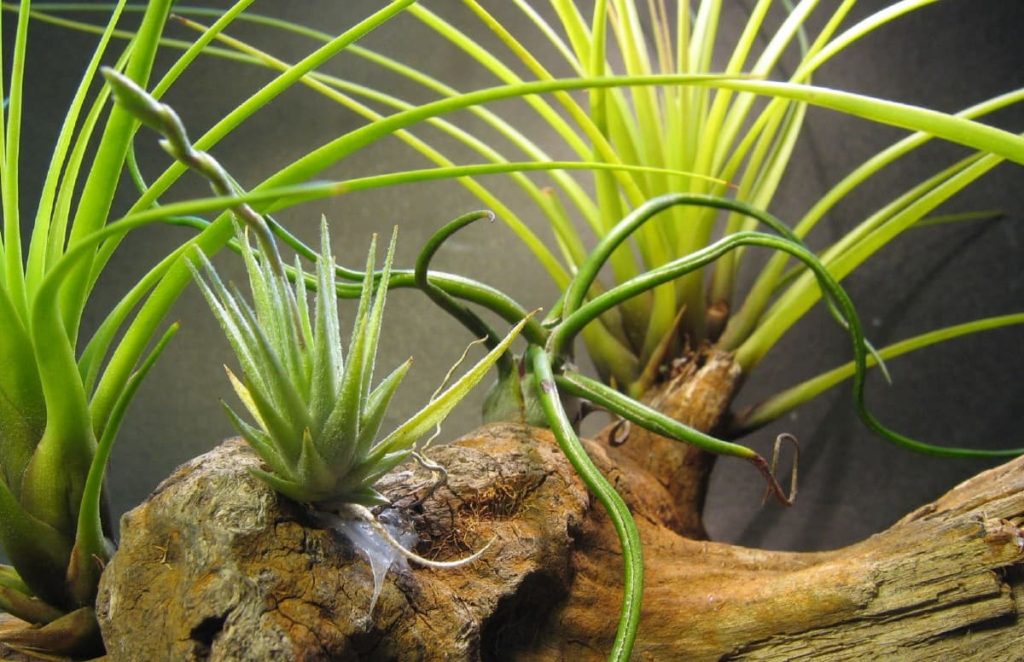
This type of air plant is one of the most attractive ones though it does not grow larger than 1 and ½ inches. It is known for its self-pollinating flowers.
21. Mad pupper (Tillandsia aeranthos bergeri)

This type of plant or commonly known as Mad Pupper is one of the most popular air plants as it produces lively colored flowers.
It emerges during spring and blooms in pink and blue colors. Considered popular because this also requires low maintenance (like any other air plant variety) which prefers bright lights or fluorescent light.
22. Maxima sky plant (Tillandsia ionantha ‘Maxima’ or ‘Huamelula’)
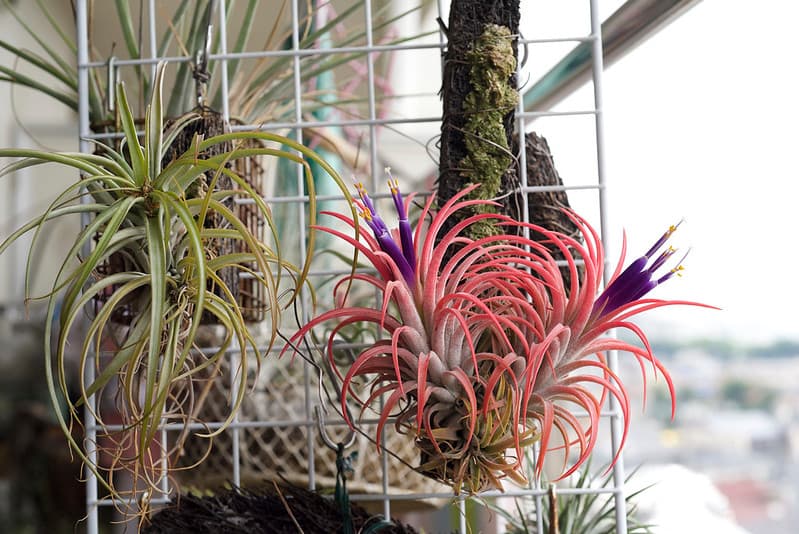
This type of air plant or also known as Huamelula are the ones which are usually seen in the market. Its attractive feature is that it produces multiple purple flowers simultaneously.
Unlike other varieties, the leaves turn red before the plant blooms. It is classified as a large air plant since its growth can reach up to 6 inches high.
23. Peach Air plant (Tillandsia capitata ‘Peach’)

This type of air plant is soft to touch. It has a silver-green rosette that turns to a pink hue when the flowers are ready to bloom.
The contrast of peach and purple color makes this type more attractive than the others. Also classified under large plants as it reaches up to 8-inches tall.
24. ‘Pink Bronze’ (Tillandsia stricta ‘Pink Bronze’)
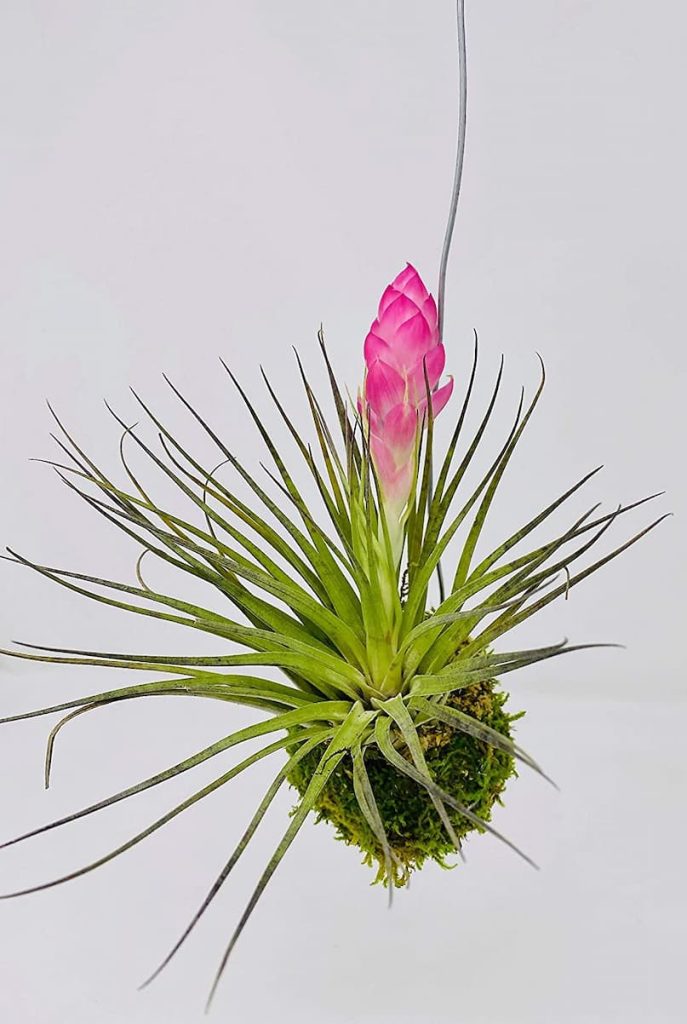
This type of plant has stiff light green leaves with purple flowers. This is a perfect home or an office décor as it displays a clean, contemporary look which makes it more attractive. It thrives on a bright light and grows up to 12-inches tall.
25. Pink quill plant (Tillandsia cyanea)
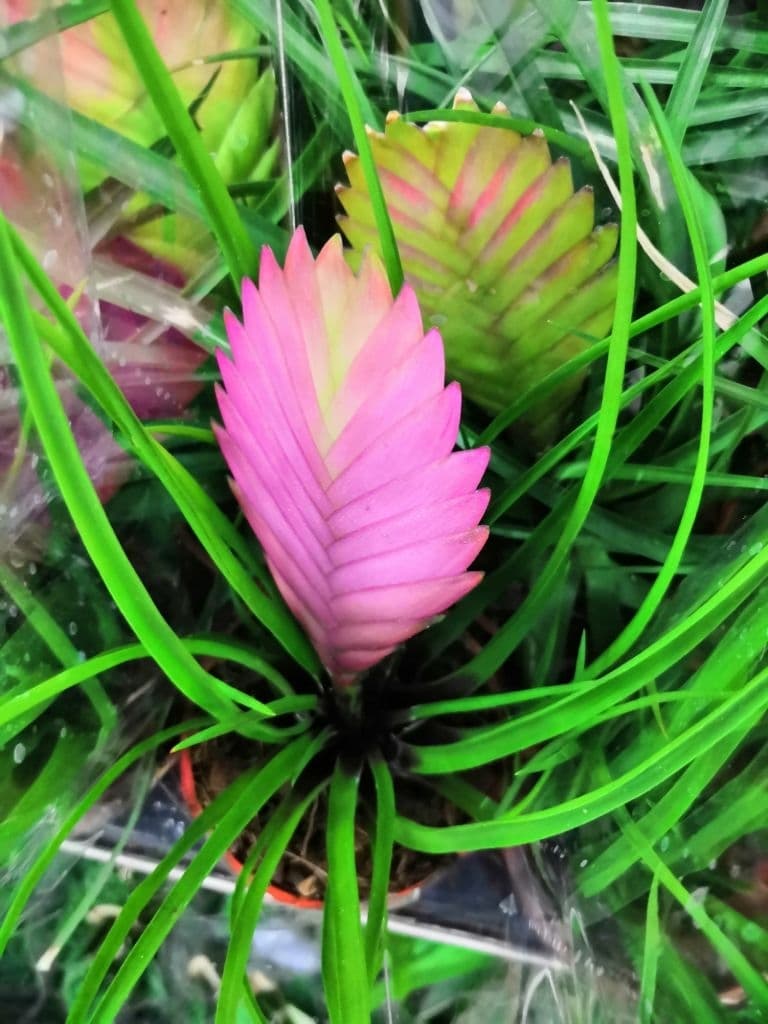
This type of air plant is also called Bromeliad inches. It is considered more of a visitor than a permanent resident of a house since it has a lifespan of only three months, after the flower blooms.
It is a smaller plant compared to the other variety that produces dull pink flowers. When buying an air plant, this type is one of the cheapest and can be found in the market. Best as a houseplant.
26. Sky plant (Tillandsia ionantha)
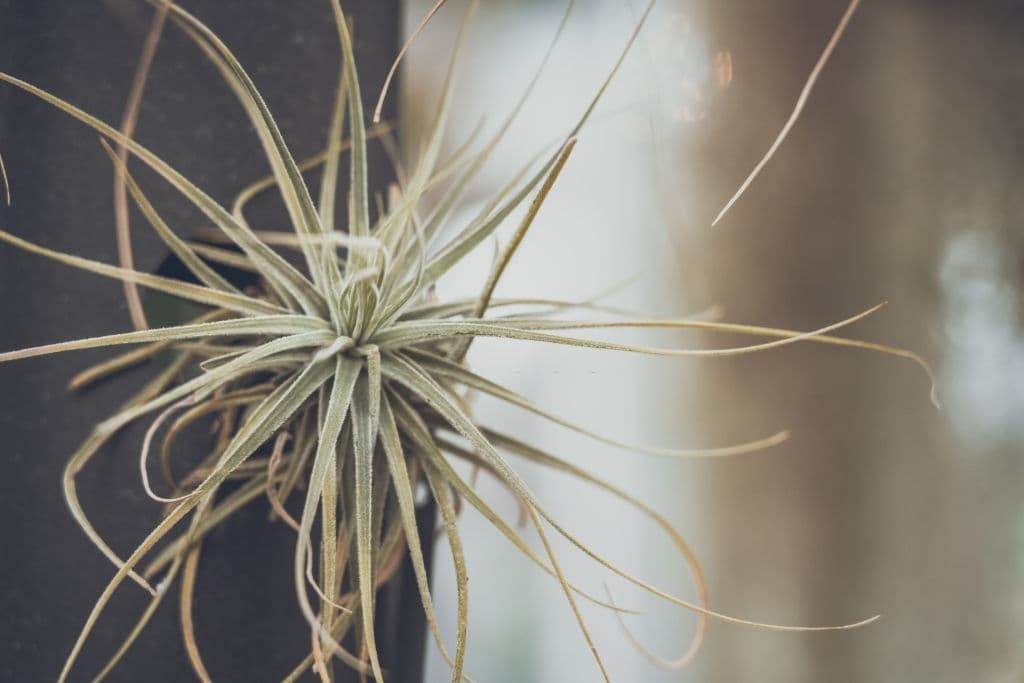
This type of air plant is also known as a skyplant and considered one of the most popular of its kind. It has silvery-green leaves which change color as it grows (turns red and pink) which happens after the flower blooms.
27. Snowball (Tillandsia tectorum)
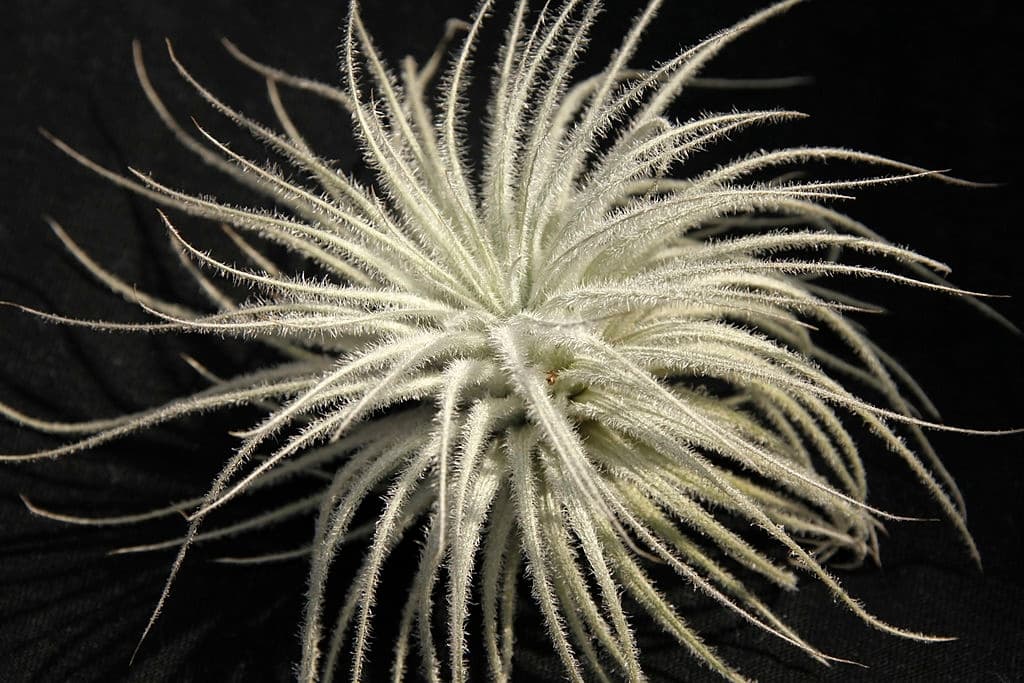
This type of air plant, from its name, has a snowball appearance and is extremely white in color. The tectorum is soft and is very lightweight. This type of air plant can grow large especially if well taken care of.
Note that this needs less water compared to the other types and can withstand direct sunlight. If you want to buy an air plant and do not have time to take care of it, this is probably for you.
28. Tillandsia Seleriana
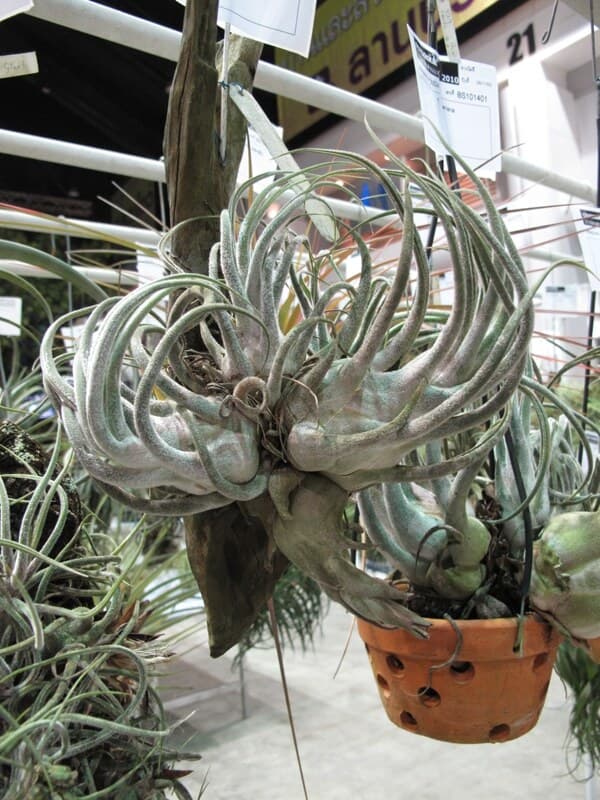
This type of air plant has a large bulbous base and is believed to have the largest pseudobulb amongst all air plants. It is identified by its green leaves covered in trichomes.
This type of air plant grows up to 10-inches tall. It is mostly seen in forests as it grows on the sides of pine trees in pine. It also produces purple spikes where the flowers in the same color emerge.
29. Tillandsia Tenuifolia

This type of air plant is known as the narrowleaf air plant which is likened to a tiny spiky evergreen bush. Its colors depend on the light conditions.
Bright green when located on high lights and light green when in low lights. It has leaves that develop into a deep violet color. When it blooms, it produces a neon pink flower.
30. ‘Whitestar’ (Tillandsia ixioides x T. recurvifolia ‘Whitestar’)
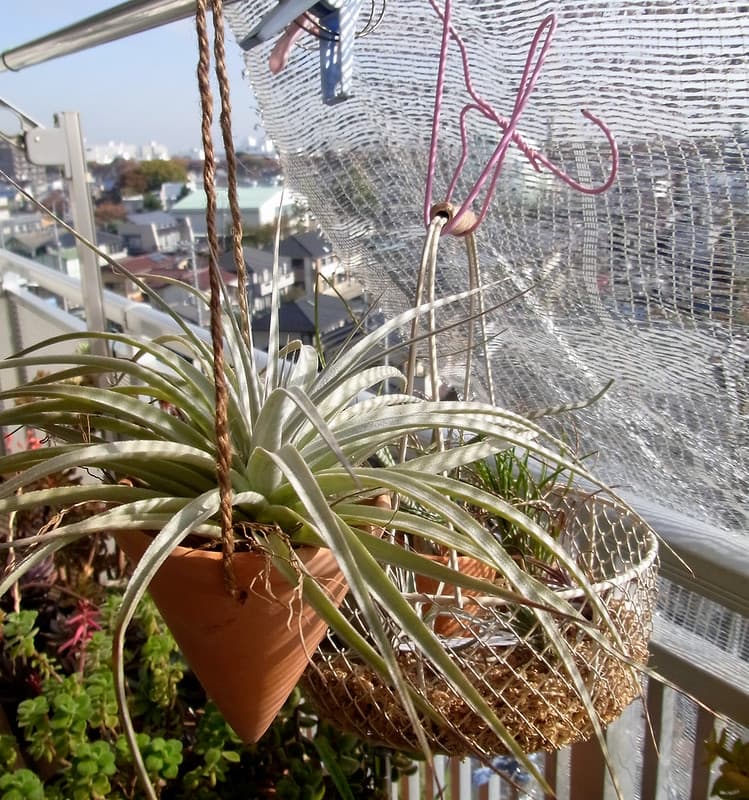
This type of air plant has two species, Ixioides and recurvifolia. It has silver leaves in star shape and produces flowers in pink and spikes in bright yellow.
Just like any other air plant, this one too is very easy to grow as it does not need so much water and enjoys being under the sun. This one is considered to be rare as it is not easy to find both online and in a physical store.
31. Xerographica (Tillandsia xerographica)
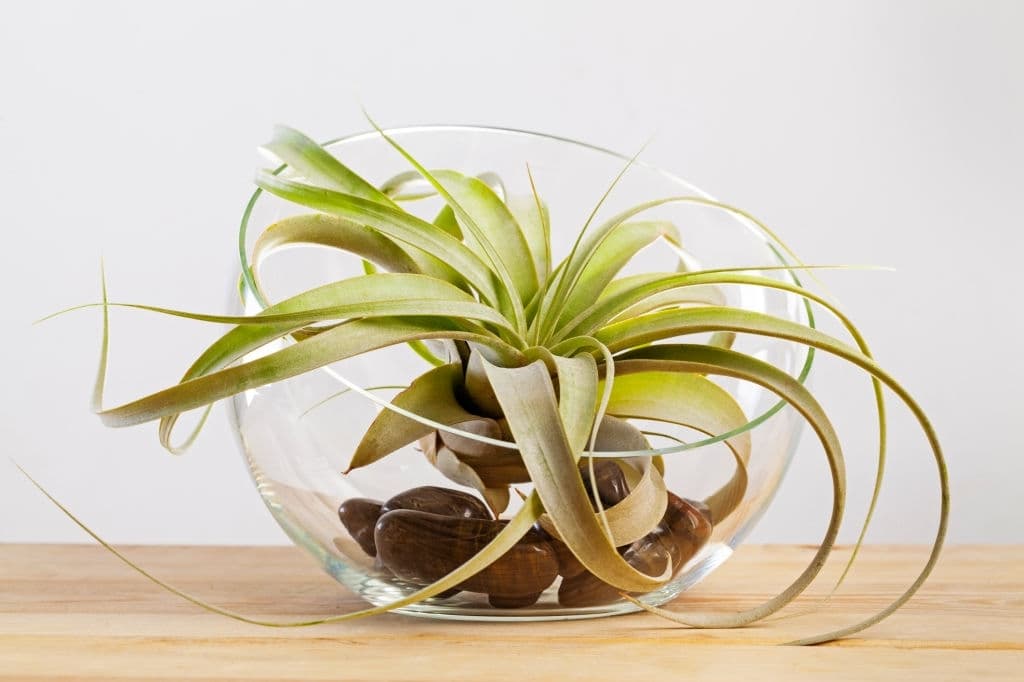
This type of air plant is also known as Xeros. This one grows clinging to the trees. It is identifiable by its curly silver leaves and spirals around it as they grow. Xeros have a distinctive aesthetic, even among other air plants.
How to display air plants
There are lots of ways to display your air plants as it is best as a home décor. Here are some ways on how to display air plants.
- Place them in a well-ventilated environment. More than choosing the best area to put your air plant, make sure to place it under a well-ventilated space so as not to ruin its beauty.
- Place them in bright indirect sunlight. Display your air plants according to its need. Be sure to keep your air plants in healthy condition by putting it to a place where it can reach the sunlight but not directly.
- Place in a pot. Some types of air plants can be put in a pot so make sure that you choose the best pot for your chosen air plant. Some air plant lovers make it a point that they give the best pot to give justice to the beauty of the air plant.
Related: 15+ Creative and Cheap Hanging Air Plant Holders
Where to buy air plants?
With air plants regaining their popularity today, some of its variety has been present around the market and some can also be bought online. In other countries, buying online is probably the best option but for some, seeing the plant in person makes it more fulfilling. Nonetheless, here are some of the best shops for you to buy your air plants from:
- AirPlantShop.com
- Niche
- Tillandsia International
- Breath of Air
- Oak Street Garden Shop
- Pistils Nursery
- Plantaflor USA
- City Floral Garden Center
- Tropiflora
You can also check local nurseries and major online auction sites like eBay.
FAQs
How many types of air plants are there?
There are several types of air plants you can choose from. From the size to the leaf’s shape to the flowers it produces, each type is having a unique and beautiful feature that sets it apart from other plants. At best, there are around 500 known species of air plants out there.
How long do air plants live?
Not all types of air plants are the same. Some last for a few days to weeks, months and some have a very long lifespan. At an average, the lifespan of air plants is said to be in between 2-4-years.
Why are air plants so expensive?
There are two main reasons as to why air plants are so expensive. One, it takes a lot of years before a plant could sprout from the seed. The second reason is that they are monocarpic meaning that they only get to produce flowers once in just a lifetime.
Where do you put air plants?
Where to put your plant is the next problem you may encounter right after buying the perfect air plant for you. If you are looking for one, here are some possible ideas which you can choose from.
- Glass terrariums: This is the default space to put the air plants. You can arrange it any way you want it. But the most common would either be having them suspended in the air or lying flat bottom.
- Natural containers: Another place to put your air plant is in containers which are classified as natural or and the recyclable ones. Natural containers include seashells and urchins while the recyclable ones are those that are inside your homes which you no longer use. This can be empty bottles, plastics or any object that can contain an air plant. As for the recyclable ones, you can even make it more beautiful by decorating the containers, making your air plant extra attractive.
- Drift, grapevine, and natural wood: Air plants are known to attach themselves to the sides of the trees, stones, and other more. When having one, you may think of recreating the natural habitat of air plants as for them to grow naturally beautiful.
You may make woods at your backyard or home gardens or wherever you plan to place your air plant. Make it seem as if they are in the forest, hugging trees and the like. Helping them to feel at home can be good in their development too.
- Vertical gardens: This can be very ideal to place your air plants as it is very simple. In vertical gardens, one may use picture frames or wood framing. This is somehow the simplest and most convenient setup for air plants as it doesn’t require too much effort.
Do air plants grow bigger?
The size of an air plant differs depending on its type and specie. Some air plants grow bigger, and some are small throughout their lifetime. With air seed grow air plants, there is a higher chance for it to grow bigger but much slower. In air plants grown as offset, these tend to grow smaller but is grows a little faster.
Conclusion
Growing air plants is easy. Unlike other plants, it only requires lesser care as it only needs sunlight and proper ventilation. It became more popular nowadays since many are moving into a new home or have their offices renovated and make an air plant as a part of the decoration as it also does not require a lot of space.
Air plants are a catch since they provide beautiful bright flowers that lightens the mood of a home. So, if you are planning to have one, choose the best that you can help you—health and decoration wise.

